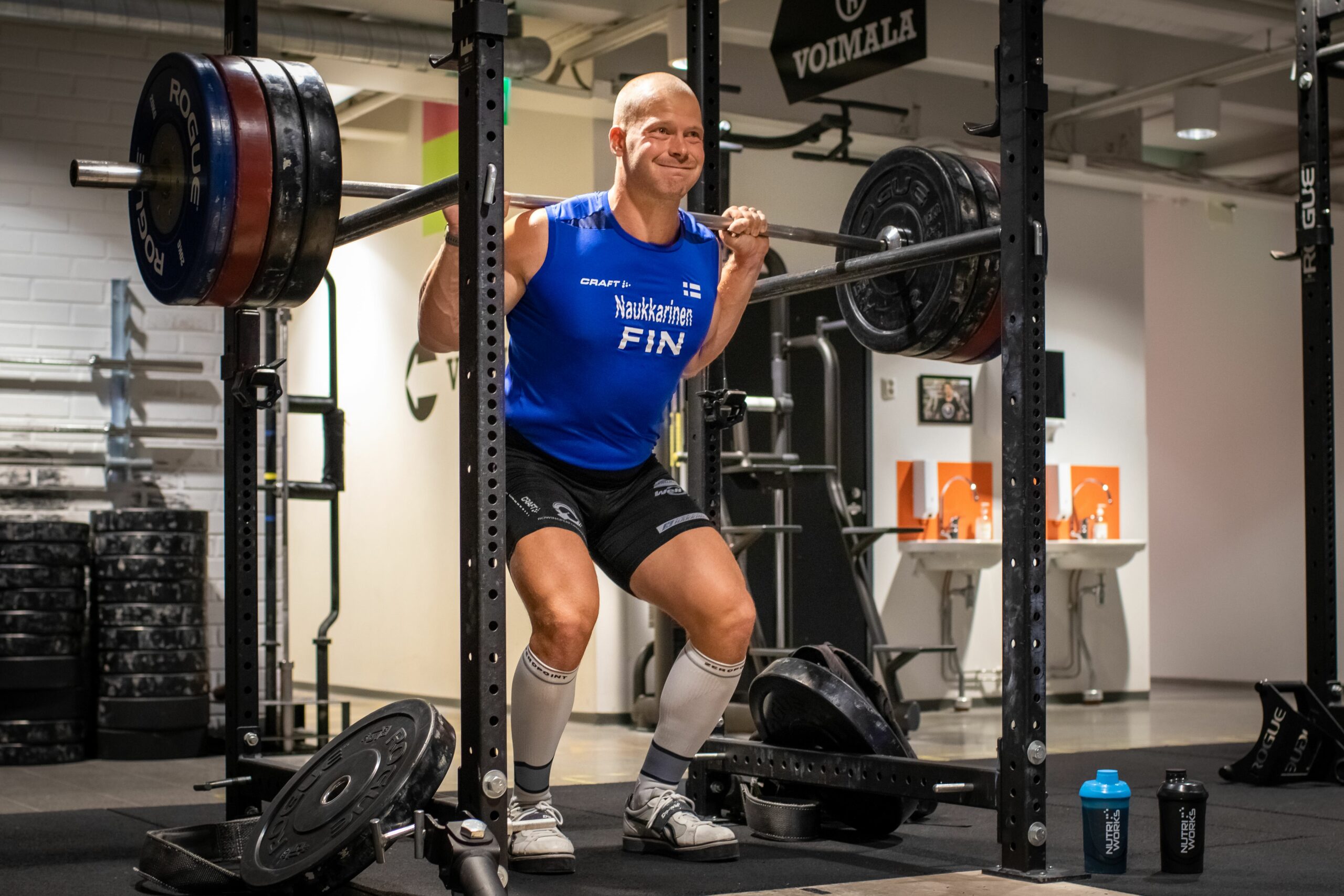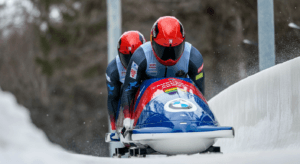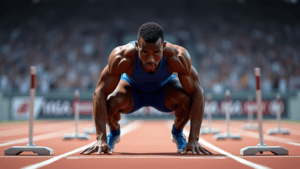Table of content
In the previous article in the series, we established some issues with the traditional approach to monitoring and prescribing resistance training. In this article, we will try to relate a bit better to those issues using some examples, and hopefully see how we probably used one “signal” to regulate our resistance training workouts without even paying too much conscious attention to it. It turns out that this “signal” you were experiencing and consciously or unconsciously interpreting and acting upon it is quantifiable. Not only that, that “signal” is also a physiologically meaningful and scientifically valid indicator of daily readiness to train and neuromuscular fatigue. Let’s see what this is all about.
The importance of movement velocity during resistance training
When you go to the gym to do your workout, how do you determine whether something feels too heavy, too easy, or just right that day? Think about it, what even makes you start thinking about how the certain load “feels” in the first place? Assuming that you’re trying your best (we will cover what doing “your best” means at some point) during every repetition, it’s probably the velocity of the movement you’re doing that is affecting your thoughts; more precisely, the velocity of the concentric muscle action (e.g., velocity from the bottom to the top position of the squat exercise). Let’s say that you squatted 160 kg for 6 repetitions last week. Today, you put 160 kg on the bar again, you do one or two repetitions and you are like “Wow, this is heavier than I expected”. You either soldier through it or you terminate the set.
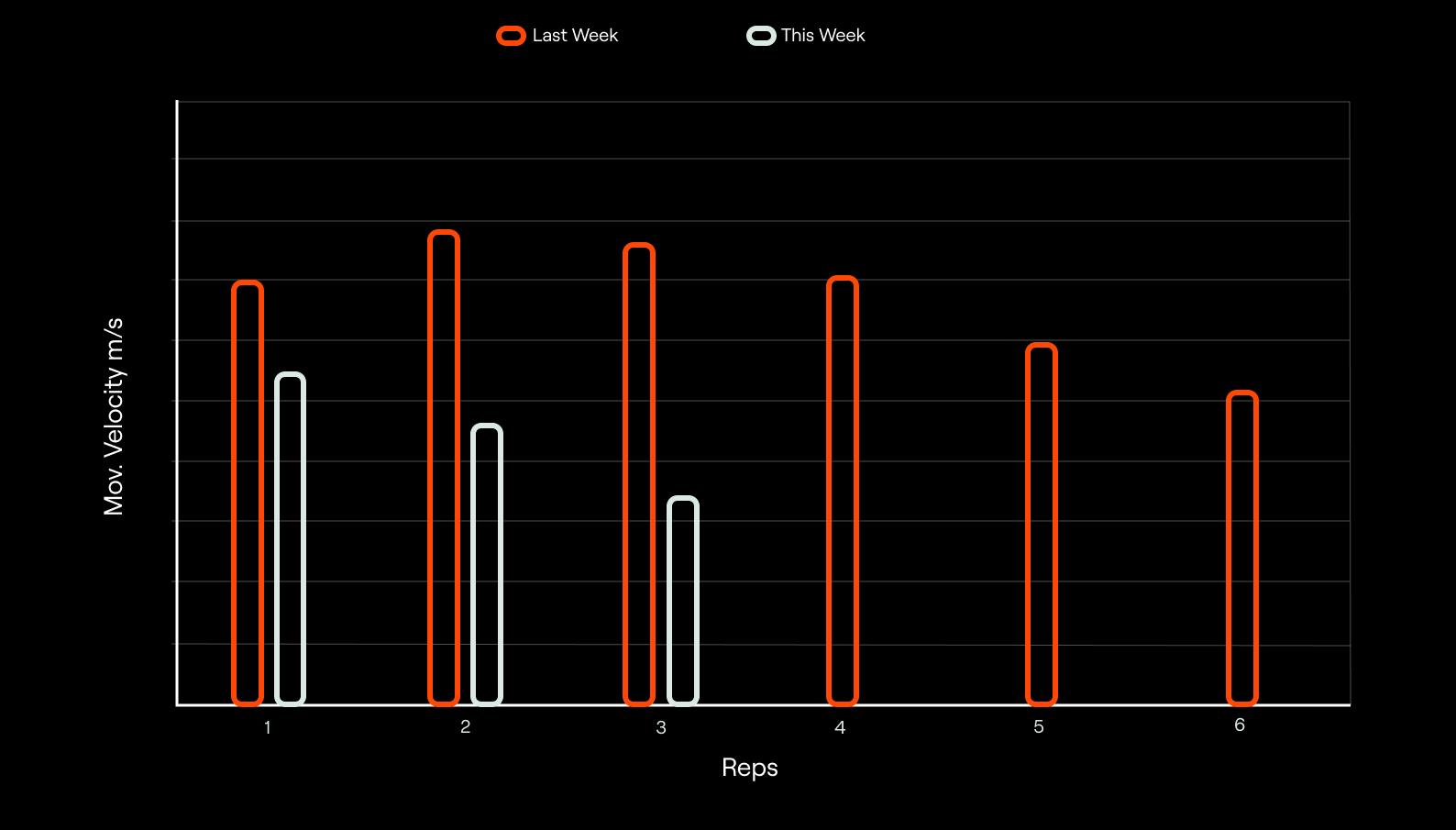
The opposite applies as well, so you can also feel like “Wow, this is easier than I expected”. Now, surely that heavier or easier than “you thought” is going to be influenced by how you felt the last time you lifted that load. However, let’s appreciate for the moment that your feelings about whether the load is heavy or not for the day are going to be reflected by your movement velocity1, that is, the speed at which you performed the concentric portion of the squat (i.e., from the bottom to the top). Importantly, this only stands if you’re really trying your “best” during every repetition. Now, let’s say that you aimed to do 10 or more squats with a given load, but you realised halfway through the set that you don’t think that 10 or more is going to be possible anymore. At that stage, your repetitions slowed considerably compared to the first. This effectively suggests that your movement velocity is also reflecting your thoughts about how many repetitions you think you can do (i.e., when you start thinking “It’s getting heavy”, you will objectively be moving slower). At any rate, based on this feedback or the “signal” you got from your body, you can decide to either change the training loads or do fewer or more repetitions while having your training goals in mind. This is all to say that you might have already used movement velocity to autoregulate your workouts without even thinking about it too much. Of course, you might have not used velocity explicitly; you used your feelings instead. However, the fact that movement velocity can reflect your feelings about how hard or easy something is makes it a very special variable for resistance training monitoring and prescription.
Why do we care about movement velocity during resistance training?
All right, movement velocity during resistance training seems important, but why velocity? Why not some other variables? Perhaps, you’ve heard people talking about the impulse or force as very important variables to consider when coaching athletes. Let’s touch on a few terms from physics to get a better idea of why movement velocity matters. Please note that the following text will involve a few equations, but all of them are necessary to truly appreciate the importance of movement velocity during resistance training, and other training as well.
It is often said that some variable called impulse determines success in many (if not all) sports [1, 2, 3, 4, 5]. And this is true! In sports and exercise in general, we are often concerned with an outcome resulting from forces acting over a duration of time. For instance, when we kick the ball in football or throw the ball in handball, we want them to travel as fast as they can as that increases our chances of scoring the goal or perhaps successfully passing the ball to a teammate. Similarly, we might want to throw a disk or javelin as far as we can and again, we would need to apply the impulse to achieve this goal. But hey, we’re talking about impulse here, not velocity. What is impulse?
What is impulse and how does it affect movement velocity?
Before we talk about impulse, let’s remind ourselves of the force and Newton’s second law. This law states that the acceleration of an object is directly proportional to the net force acting upon the object and inversely proportional to the mass of the object. Mathematically speaking, the force is given by the product of mass and its acceleration (Force = mass x acceleration). In other words, the faster you move some object, the more force you produce to do so. In this equation, if we appreciate that acceleration represents a change in velocity over time

we can come up with a new equation stating that

If we get rid of time from the right-hand side of the equation, we will get the equation stating that Force × time = mass 𝑥 change in velocity. The quantity given on the left-hand side of the equation represents impulse (Force × time) and the quantity on the right-hand side represents the change in momentum (mass x change in velocity). In other words, the impulse is given by the product of the force applied to an object or body and the duration of that force whereas the change of momentum is given by the product of mass and change in velocity of that mass. Since we have an equality sign between impulse and change in momentum, we know that if we increase one, we’ll also increase the other. Armed with this knowledge on how to determine impulse and considering its above-mentioned importance for the performance of different movements, we can appreciate that to generate a greater impulse, we can either apply more force or apply that force over a longer period. As we all know, most sporting actions do not allow us plenty of time to apply force. That is, we’re often time-constrained when playing sports [3]. Also, it only makes sense to increase the duration of the force application if the force we’re applying is already as high as it can get. Therefore, especially in the resistance training context, producing as much force as we can in the shortest amount of time while not reducing the range of motion is often our best bet when it comes to performance [3, 4].
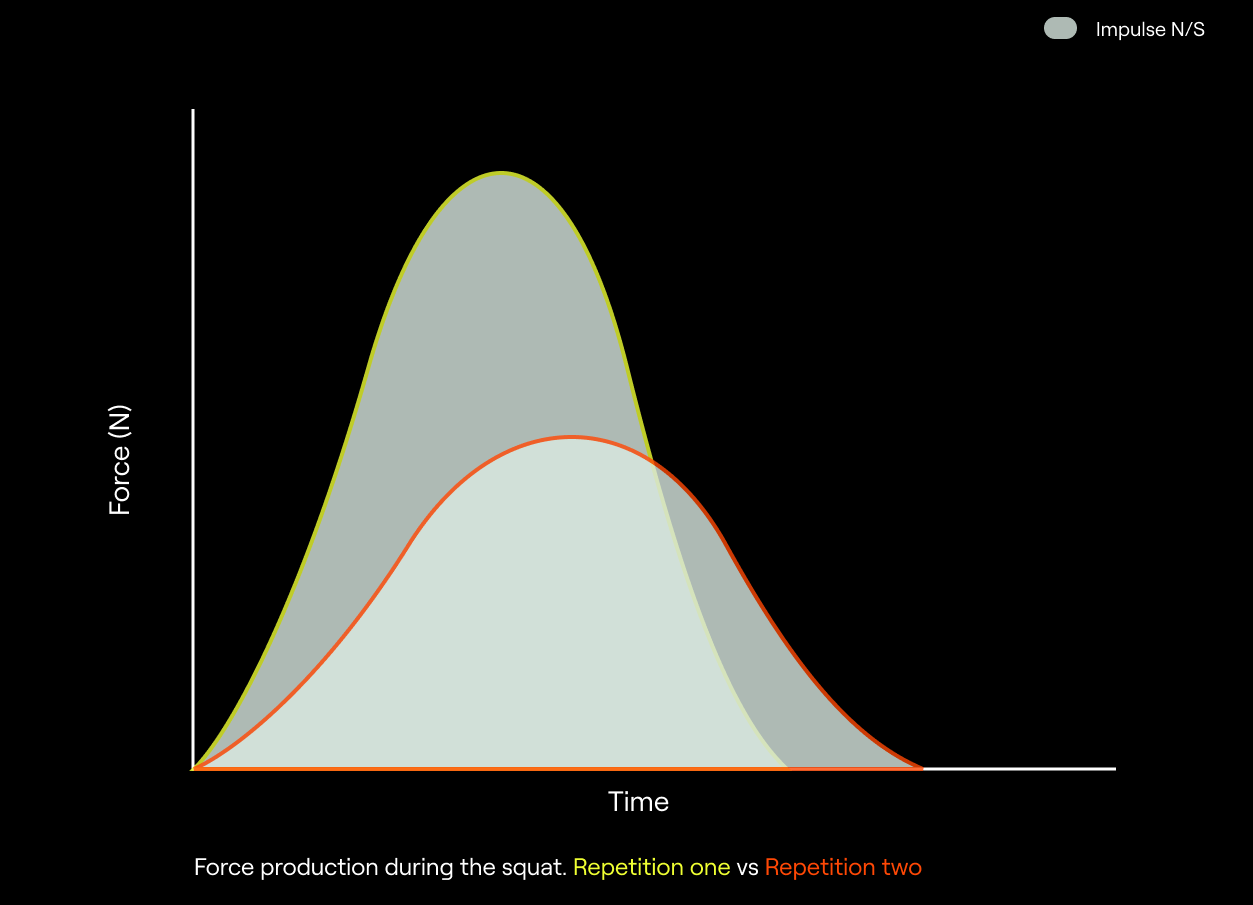
What is momentum and how is it related to impulse and movement velocity?
Ok, the impulse now makes sense, but we didn’t say what momentum is, we just said a change in momentum. Also, how is all this related to velocity and what makes velocity so special when it comes to resistance training monitoring and prescription? We are nearly there. Indeed, we said that the impulse is important and that it equals the change in momentum. But what is momentum really? In sports, we often hear coaches or players saying, “We need to build momentum”. The connotation we get from this statement is that the coach or players want their team to be on the move and be hard to stop. In physics, momentum refers to the quantity of motion that an object has; thus, momentum can be defined as the mass in motion which is given by the product of the mass of the object and its velocity (Mass x velocity). In the resistance training context, a barbell with 140 kg that is just sitting on the floor has zero momentum as it’s not moving. Let’s say that we’re doing a deadlift exercise, and if we start lifting the barbell up, it gains momentum. Now, here is the key, what changes when we start lifting the barbell up from the floor from point A (floor) to point B (peak hip extension in the deadlift exercise)? Only velocity changes.
Why? Well, mass is constant, and it doesn’t change unless someone adds an extra load to the barbell while we lift, which would be a very weird thing to do. Since the mass is almost always constant in the context of training and human performance, it’s the velocity that determines how well we are doing in a particular movement. Now, it is important to keep in mind that impulse is a key determinant of performance in many movement tasks inside and outside the weight room. Nevertheless, movement velocity is arguably a more straightforward and intuitive variable for your athletes or clients to understand and relate to. Accurately measuring (or estimating) movement velocity is much less expensive than impulse. Most importantly, movement velocity really reflects all the changes you might be looking for in the weight room when working with your athletes or clients. While you might now say that one doesn’t have to track movement velocity; one could simply rely on their own feelings to autoregulate their resistance training workouts. You would be absolutely correct. In fact, you and your athletes have already been doing that more or less consciously for a long time. However, whether you should “leave” your athletes or clients on their own and let them autoregulate their workouts entirely based on how they feel is up for debate. This topic will be addressed in one of the future blog posts, so stay tuned. For now, let’s appreciate the fact that movement velocity has the capacity to reflect many of the changes in the physical state your athletes and clients might experience in the weight room.
Movement velocity is king during resistance training.
There you have it. We hope it is now clear why movement velocity during resistance training is such an important variable to monitor. It has numerous applications for both resistance training monitoring and prescription. For instance, we can adjust the training loads that will match our readiness to train on a daily basis. From the acute training responses’ perspective, we can use velocity to determine the 1) overall mechanical performance; 2) degree of neuromuscular fatigue induced by a given set; 3) when the fatigue-induced changes become apparent, and at what rate they develop. From the longitudinal responses’ perspective, we can have more granular insight into changes in the performance status of our athletes or clients. In the following blog posts, we’ll aim to dive a bit deeper into how to use movement velocity to monitor and prescribe resistance training and evaluate changes in performance.
- Please note that with “movement velocity”, we always refer to the velocity of the concentric muscle action during a given exercise. For example, when performing a back squat, only the velocity from the bottom to the top position is considered whereas the eccentric phase of the lift (i.e., velocity from the top to the bottom) is not considered as it’s usually constant. ↩︎
References
- McGinnis, P. M. (2013). Biomechanics of Sport and Exercise. Human Kinetics.
- Kawamori, N., Nosaka, K., & Newton, R. U. (2013). Relationships between ground reaction impulse and sprint acceleration performance in team sport athletes. The Journal of Strength & Conditioning Research, 27(3), 568-573.
- Turner, A. N., Comfort, P., McMahon, J., Bishop, C., Chavda, S., Read, P., … & Lake, J. (2020). Developing powerful athletes, part 1: Mechanical underpinnings. Strength & Conditioning Journal, 42(3), 30-39.
- Suchomel, T. J., Nimphius, S., & Stone, M. H. (2016). The importance of muscular strength in athletic performance. Sports medicine, 46, 1419-1449.
- Kirby, T. J., McBride, J. M., Haines, T. L., & Dayne, A. M. (2011). Relative net vertical impulse determines jumping performance. Journal of Applied Biomechanics, 27(3), 207-214.

